To provide you with the best experience, cookies are used on this site. Find out more here.

To provide you with the best experience, cookies are used on this site. Find out more here.

To build your own Itinerary, click  to add an item to your Itinerary basket.
to add an item to your Itinerary basket.
Already saved an Itinerary?


You are here: Home > Visitor Information > History of Windsor
It may seem surprising but the town of Windsor is considerably older than the Castle. It dates from the 7th century with royal ownership probably from the 9th. At first Windsor was located three miles away but moved to its current site before 1110, changing its name to ‘New’ Windsor. Much as Bath is a planned town of the 18th century, so New Windsor is a planned town of the 12th.
So much has happened in Windsor’s history! Here’s a selection of not-to-be-missed locations that touch on a few aspects of its 1000-year history to help you discover more of this wonderful little town and its close neighbour, Eton. And there are lots of ways to help you to discover more about them. Thanks to Dr David Lewis for his research.
Discover Windsor and Eton's history using what3words' location-finding references. what3words have assigned each 3m square in the world with a unique 3-word address so simply click on the 3-word link (///word.word.word) in order to navigate.
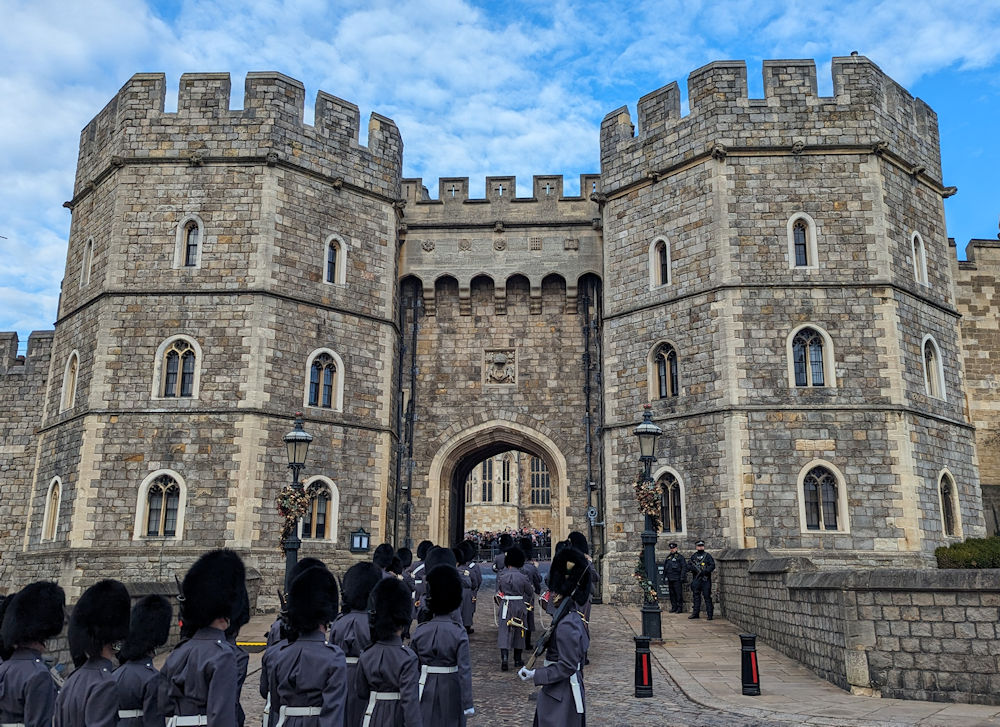
The Henry VIII Gateway to Windsor Castle with guards marching, image Nicola Bell @ VisitWindsor
what3words ///motion.resort.avoid
Henry VIII Gateway is the symbolic link between the Castle and the town. Originally there was a moat and drawbridge. Today the great oak gates are secured with a heavy bar against the cobblestones when closed. Henry VIII built his gateway in about 1511. The panel above the archway displays heraldic badges of the king, with the pomegranate of Queen Catherine of Aragon, his first wife.
what3words ///open.stacks.joke
Windsor proved to be a particularly successful new town, and although at first its marketplace was filled with temporary stalls on market day (Saturday), by the late 13th century these had been replaced by permanent shops, covering an area much as they do today, and known as Guildhall Island. The medieval marketplace, however, was not the gentile place we see now: the streets were unpaved until the 18th century and it was dirty, with putrid air owing to its many noxious trades. To minimise inconvenience, these trades were confined to fixed areas: fish sellers occupied Fish Street, now Church Street, and likewise the town’s slaughterhouses and butchers (‘the shambles’) were located near the present-day Windsor Guildhall. The medieval town also had a ‘red light’ street, behind the marketplace. Only the poorest lived in this vicinity.
Visitors used the town’s inns, first recorded in the late 15th century and they continue as a feature of the town’s economy. These inns had names such as The Crown or The Angel – just as pubs and hotels are named today. More than 30 existed in the 16th century. At this date they particularly catered for the crowds of pilgrims visiting the tomb of Henry VI in St George’s Chapel, a king popularly considered a saint. His shrine was widely venerated until Henry VIII’s break with Rome in 1536. Although a small town, Windsor became one of the thirtieth wealthiest in the country, owing to its many visitors. Now walk down Castle Hill towards the High Street, along Market Street (formerly Butchers Row) and stop between Windsor’s Guildhall and the crooked house (Market Street House).
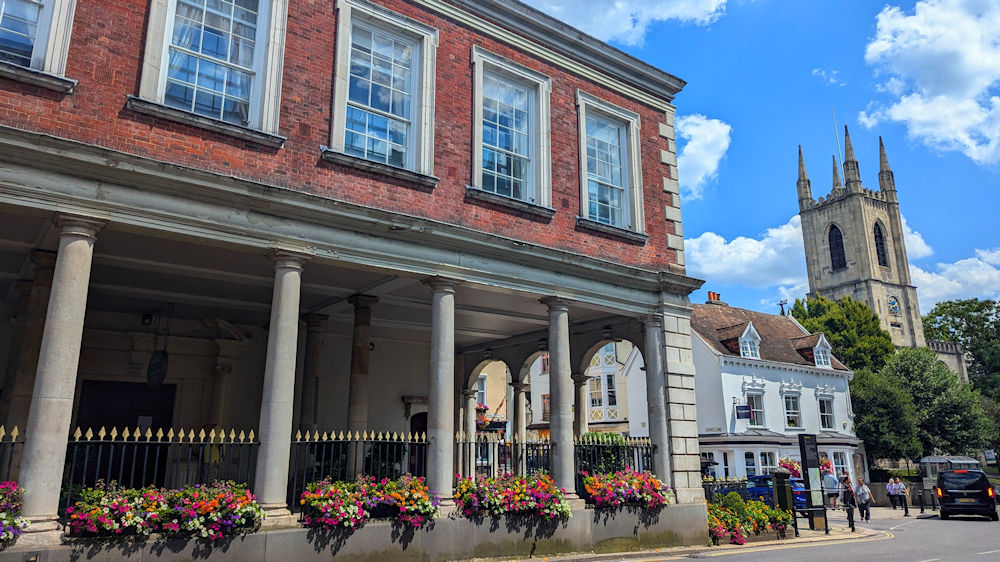
Windsor Guildhall, image Nicola Bell @ VisitWindsor
what3words ///festivity.tops.slips
Windsor Guildhall, extended in the 1830s, is largely the structure built in 1691, designed by Sir Thomas Fitz. It replaced Windsor’s first Guildhall built in c. 1360, which faced the castle gates. By the late 17th century the royal preference was for the newer palaces closer to London, such as Hampton Court or Whitehall, with the result that Windsor Castle was ignored and neglected. This was a disaster for the town, as its economy was based on the castle. The commissioning of a new Guildhall – which the town could only just afford – was an attempt to breathe new life into its economy. Although it is often noted that this building is connected with Sir Christopher Wren, there is no clear evidence to support such a claim. His son, however, did provide the statue of Prince George (consort to Queen Anne, died 1714), which occupies a niche in the eastern elevation.
Queen Charlotte Street sign and view of the Castle from Church Street, images Nicola Bell @ VisitWindsor
The cobbled streets around Windsor Guildhall hold many surprises:
• The Old King’s Head in Church Street bears a plaque recording the warrant for the execution of Charles I in 1648
• A few doors along is Burford House, reputed to be where Charles II housed his favourite mistress, Nell Gwynne
• Queen Charlotte Street is one of the shortest streets in Britain at just 51 feet, 10 inches.
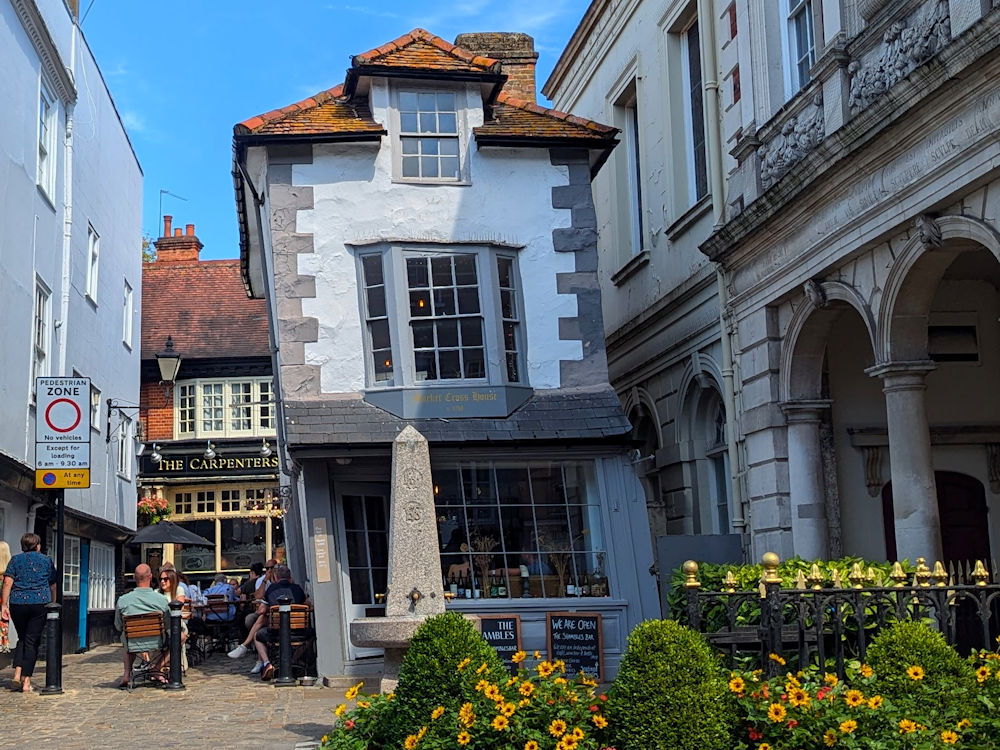
Market Cross House (The Shambles) and Queen Charlotte Street, image Nicola Bell @ VisitWindsor
what3words ///hobby.appear.navy
The strangely leaning 18th-century Market Cross house is one of the most photographed buildings in Windsor, after the Castle! It was previously a butcher’s premises, then a beer shop, but now it's The Shambles Bar. It demonstrates the advantages of timber-framed buildings: if built of brick, it would have fallen over years ago!
what3words ///market.pure.sock
Windsor’s Peascod Street was where the wealthy lived. Peascod Street (literally, pea-pod street), makes reference to the area’s pea fields and the favourite medieval snack of buttered peapods, probably sold on this street from the 12th century.
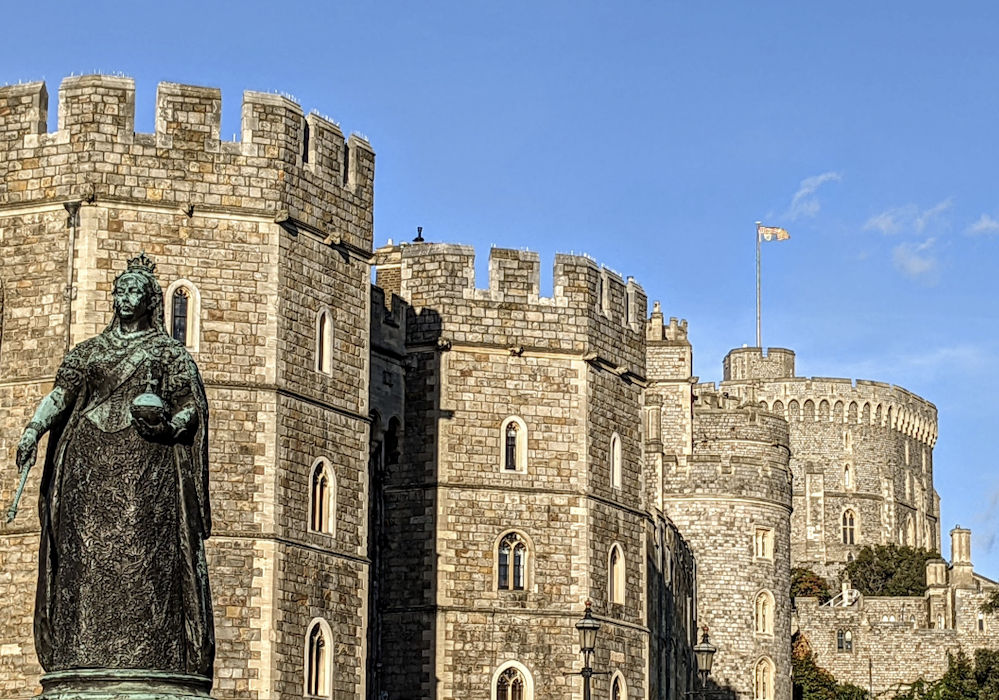
Queen Victoria statue and Windsor Castle, image Nicola Bell @ VisitWindsor
what3words ///keeps.piper.homes
This statue was presented to the town to mark Queen Victoria’s Golden Jubilee in 1887. Victoria is particularly associated with Windsor because, following the Castle’s renovation between 1820-40, it became her main residence. The renewed presence of the royal court in Windsor brought new prosperity and, linked with the arrival of the railways in 1849, the town was largely rebuilt, accounting for its appearance today.
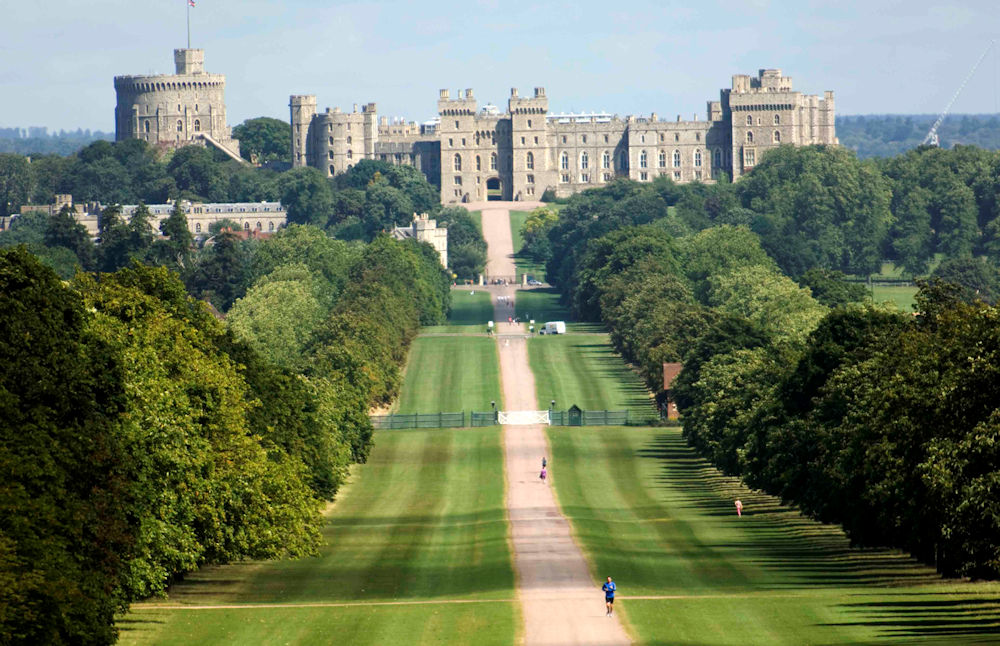
The Long Walk
what3words ///silks.almost.ages
The great ceremonial route from the Castle to Windsor Great Park, stretching 2.65 miles to the Copper Horse, the equestrian memorial to George III. Originally laid out by Charles II in 1685, it was an avenue of oak and elm trees used by the king for walking and hunting stag in the Great Park. Queen Anne added the central carriageway in 1710. Jeffry Wyatville redesigned it in 1824 as a ceremonial route to the Castle. State visit processions enter via Park Street and the Long Walk. Following the State Funeral at Westminster Abbey on 19 September 2022, Queen Elizabeth II’s coffin was brought home to Windsor. The State Hearse drove slowly down the Long Walk to St George's Chapel, Windsor Castle, where the Committal Service took place.
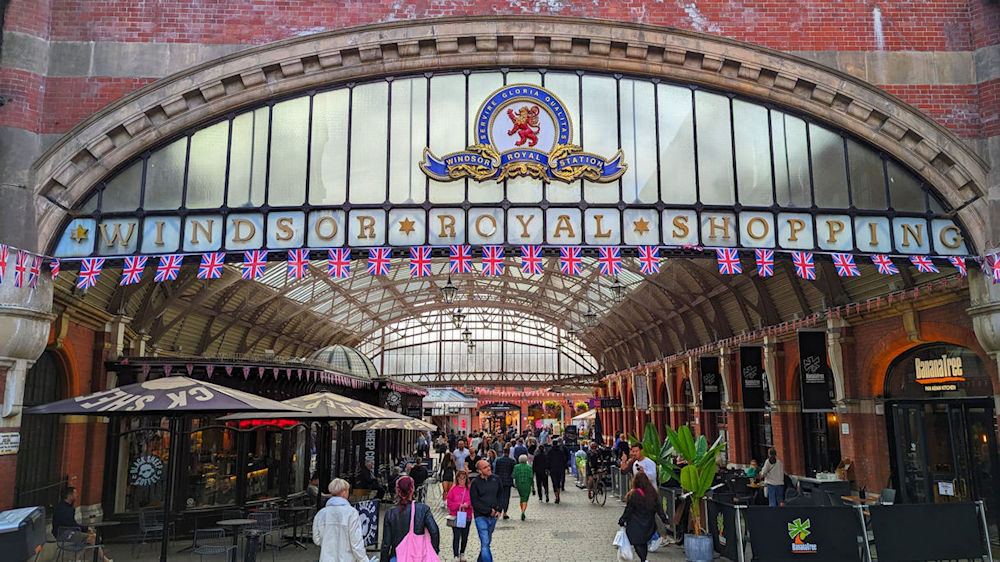
Entrance to Windsor Royal | Station Shopping, image Nicola Bell @ VisitWindsor
what3words ///damage.manliness.engine
The Great Western Railway (GWR) links Windsor to Slough as it has done since 1849. When it was built it made a huge difference to the people of Windsor since they could now live in the town and travel to London each day for work. Queen Victoria frequently travelled by train having become, in 1842, the first monarch ever to take a train ride. She didn’t enjoy the experience as much as Prince Albert. It was leaving the station in March 1882 that a man tried to shoot her. The station building as you see it today was completed in 1897 to celebrate Queen Victoria’s Diamond Jubilee. Central station is also home to Windsor Royal shopping centre.
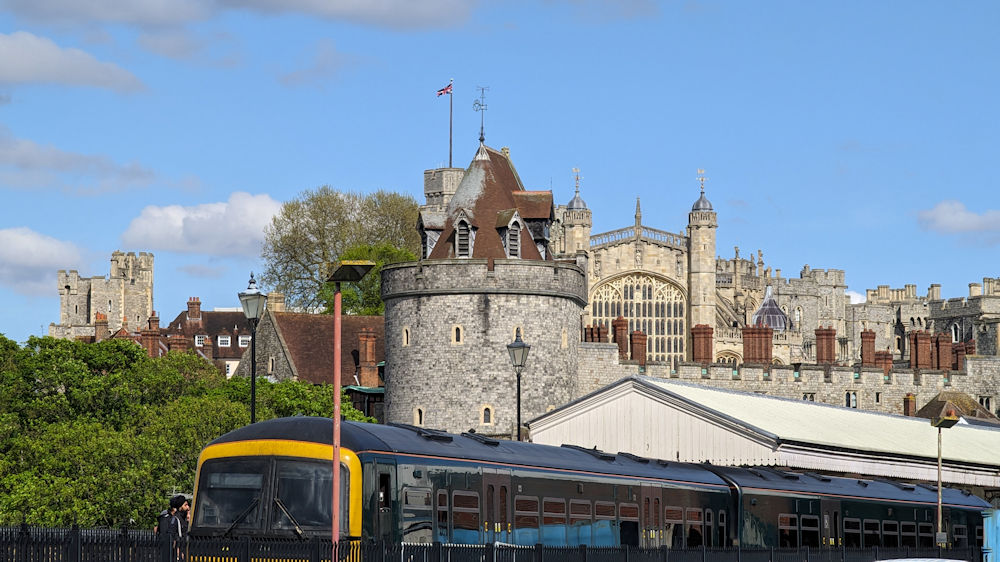
View of Curfew Tower, Windsor Castle, image Nicola Bell @ VisitWindsor
what3words ///handy.transmitted.excuse
Walking down Thames Street, passing the massive Castle walls (built in 1240) on your right, you have to imagine away the windows which now pierce them, in order to appreciate their original appearance – with one exception. Just before the corner (Curfew) tower notice the small iron barred window, mid-way up the wall. This is the last surviving original castle window, which lights a ‘sally port’ tunnel beneath the High Street. This was the means of escape should the castle be sieged; it was never used, as far as we know.
Originally called Clewer Tower and later Bell Tower, Curfew Tower stands within Windsor Castle and can be seen from Thames Street. It was built between 1227 and 1230 to buttress the Castle’s defences following a siege during the reign of King John. It’s one of the oldest parts of Lower Ward with walls 13 feet thick and 100 feet high. The tower contains a dungeon where prisoners were held and executed. The bodies of traitors were hung from the battlement as a warning to miscreant townsfolk.
The Curfew Tower also houses the bells of St George’s Chapel, held within a massive timber frame, originally planned as a spire for the chapel but never installed. It is one of the largest and finest belfries in Britain. Three times a day – at 0900, 1200 and 1800 – the chapel bells chime the tune of St David’s.
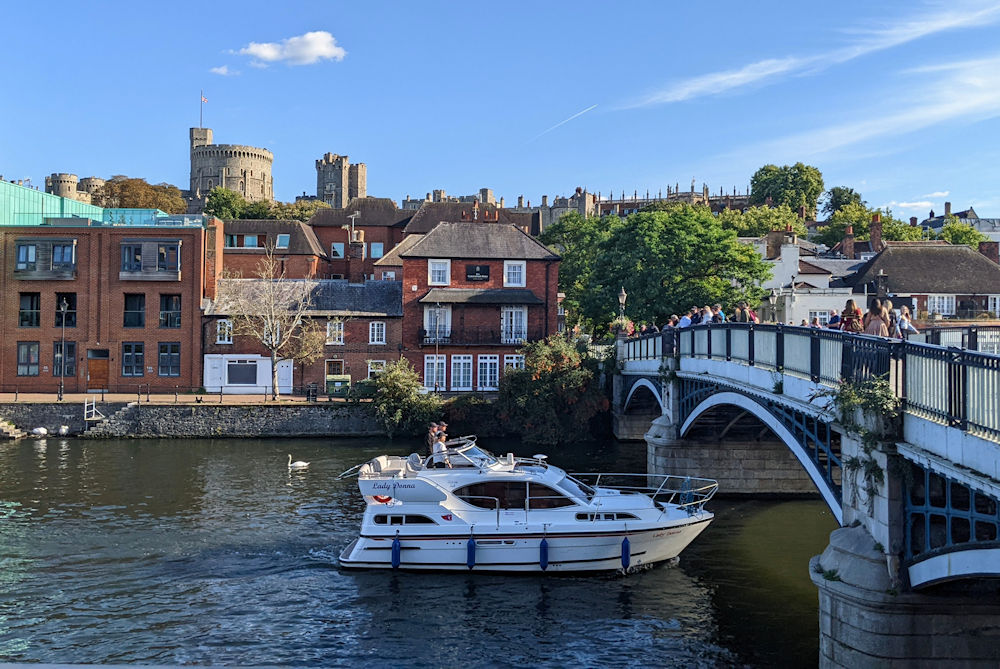
Windsor Bridge, image Nicola Bell @ VisitWindsor
what3words ///cook.coach.begun
This iron bridge, connecting Windsor to Eton across the River Thames, was built in 1822 and replaced a succession of timber bridges dating from circa 1170. In the 12th century bridges were both rare and costly. Windsor Bridge was important because it brought trade to Windsor’s market, underpinning the new town’s economy. River and road tolls were collected at the bridge until the 19th century and claimed by the crown until the 16th when ownership of the bridge passed to the town.
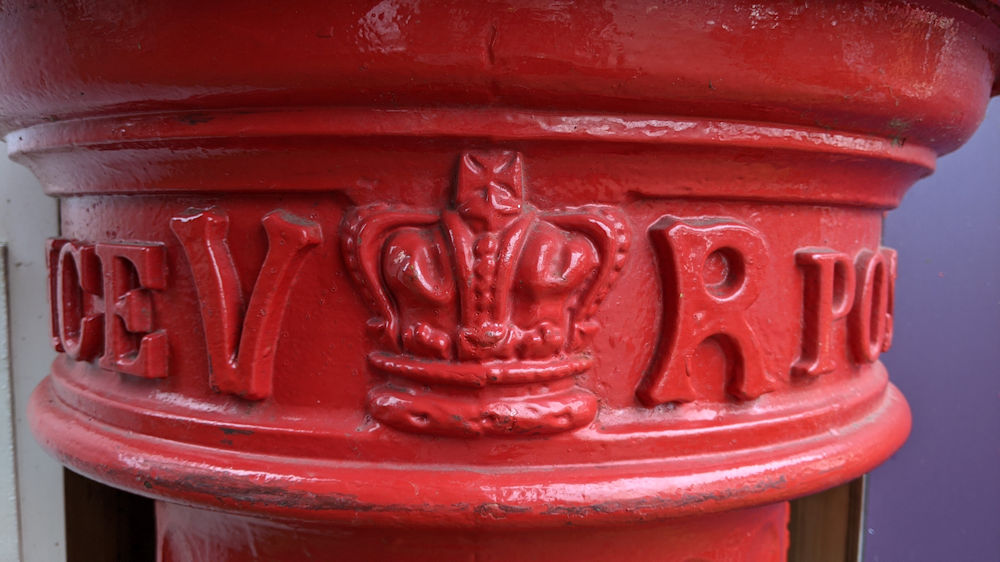
Eton pillar box, image Nicola Bell @ VisitWindsor
what3words ///comet.piano.pills
Eton High Street is the main street of the separate community of Eton, and has remained unchanged for many years. Royal processions from Westminster to Windsor passed along this road, one of the most famous being the funeral in 1537 of Jane Seymour, the third wife of Henry VIII.
Near 47-49 Eton High Street, you’ll find a rare pillar box dating from 1856. Still used today it was made by Smith and Hawkes Eagle Foundry in Birmingham and is one of only 10 surviving. Its unusual vertical slot for posting letters and fluted Doric decoration illustrates where the name ‘pillar’ came from. Earlier postboxes were painted green to blend in with their surroundings but people kept walking into them! And another claim to fame, Eton was the first village in England to have a post office.
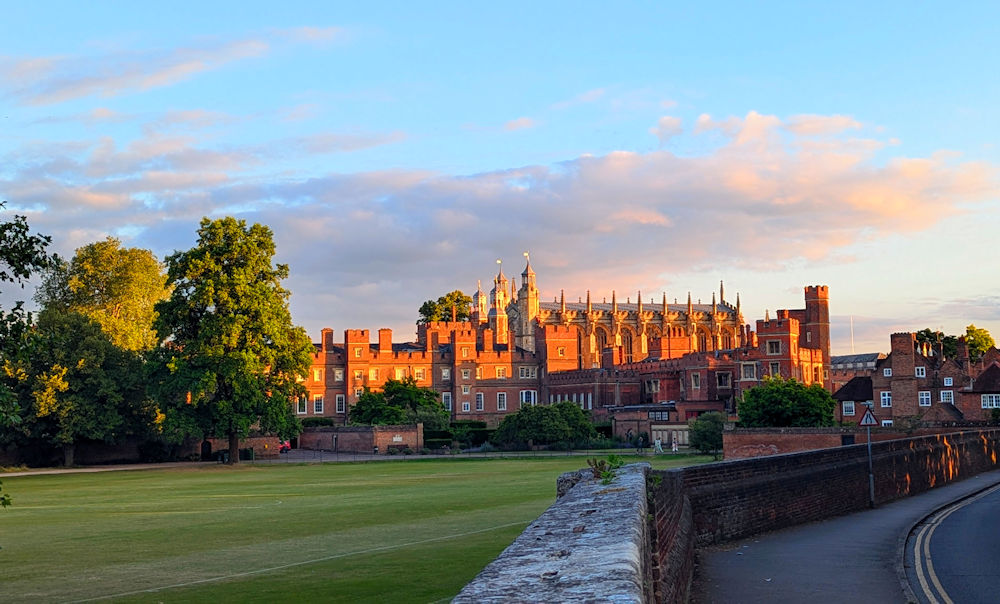
View of Eton College, image Nicola Bell @ VisitWindsor
Now reach Barnes Pool Bridge, recorded from the 13th century, although remade in iron in the 19th century. Arrive outside Eton College. This is one of the oldest and most famous schools in the country, founded by King Henry VI in 1440. The college buildings are amongst the earliest brick structures in the country and are of exceptional architectural importance. The college chapel contains wall paintings of late 15th century, again some of the finest in the country, a chance survival only re-discovered in the 19th century. Eton College has educated twenty British prime ministers, including David Cameron and Boris Johnson, and both Princes William and Harry.
Thanks to Dr David Lewis for his research.
Want to receive Windsor tips, ideas and inspiration? Subscribe to our enewsletter!
Want to hear more? Sign UpX




